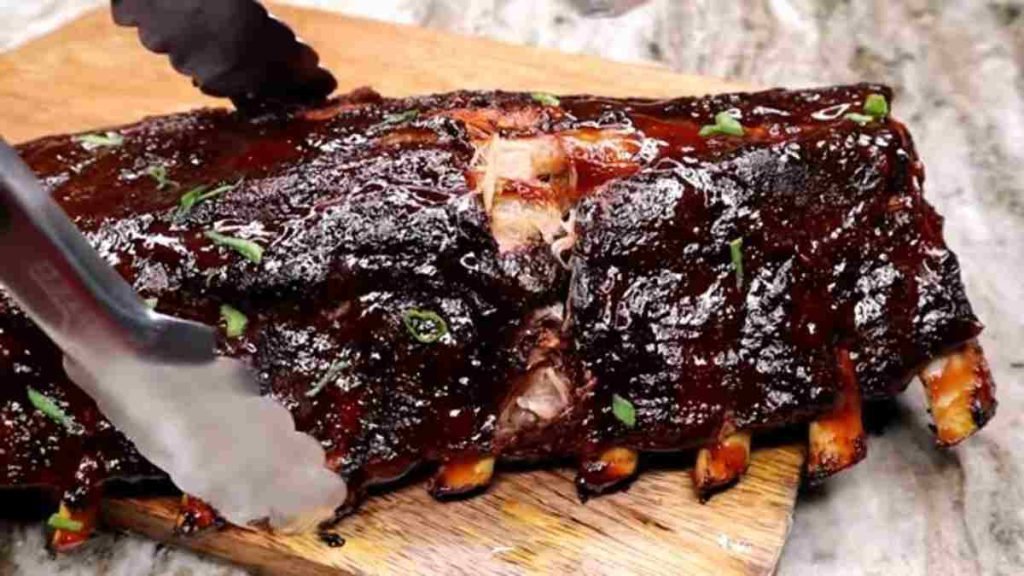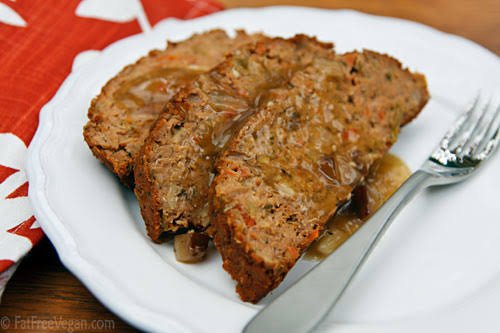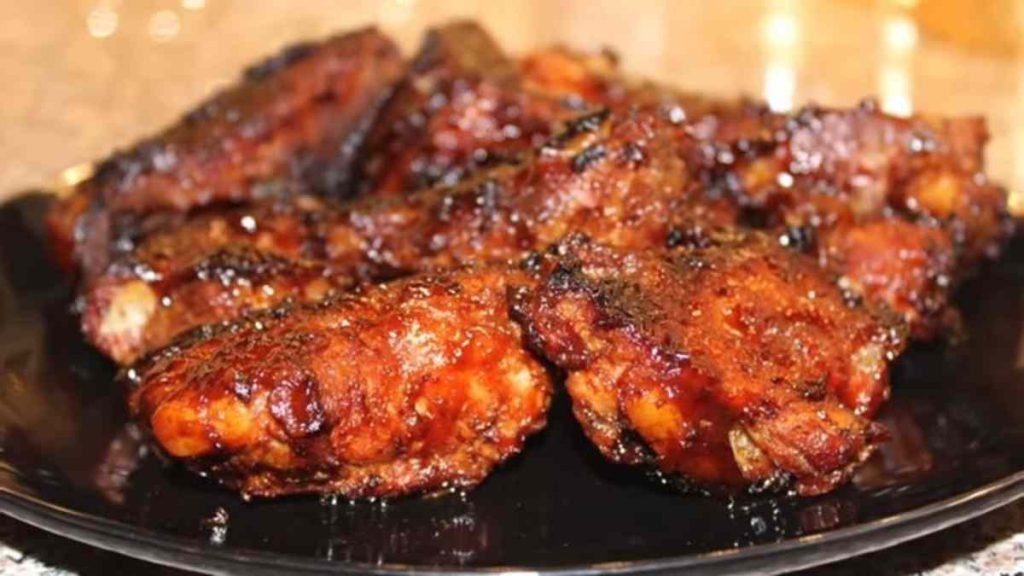The sweetness of caramelized onions beautifully balances the tanginess of tomatoes, while spices such as cloves, cinnamon, and bay leaves infuse the dish with a warm and aromatic essence. The slow cooking process allows the meat to become incredibly tender, absorbing all the flavours from the stew and resulting in a melt-in-your-mouth experience.
The generous use of onions, the star ingredient, gives the dish its characteristic sweetness and depth. The addition of aromatic spices like cloves and cinnamon adds a unique twist, elevating the flavours to new heights.
Ingredients For Preparing Beef Stifado
To prepare a delicious Beef Stifado, you will need the following major ingredients:
- Beef: 800 grams (1.75 pounds) of stewing beef, preferably cut into bite-sized chunks.
- Onions: 10 small to medium-sized onions, preferably pearl onions or shallots. If unavailable, you can use regular onions and cut them into quarters.
- Garlic: 4 cloves, minced or finely chopped.
- Tomatoes: 4 ripe tomatoes, peeled and chopped, or you can use canned diced tomatoes (400 grams or 14 ounces).
- Red Wine: 1 cup of dry red wine. Traditional Greek wines like Agiorgitiko or Xinomavro work well, but any good-quality red wine will do.
- Red Wine Vinegar: 2 tablespoons.
- Olive Oil: 3 tablespoons.
- Bay Leaves: 2 to 3 leaves.
- Cinnamon Stick: 1 small stick (about 2-3 cm in length).
- Cloves: 3 to 4 whole cloves.
- Thyme: 1 teaspoon of dried thyme or a few sprigs of fresh thyme.
- Sugar: 1 teaspoon (optional). This can be added if you prefer a slightly sweeter flavour.
- Salt and Pepper: To taste.
- Water or Beef Broth: Approximately 1 cup, or as needed.
Step-by-Step Guide Beef Stifado Cooking Direction
Step-by-Step Guide to Cooking Beef Stifado:
Prepare the Beef
- Start by trimming any excess fat from the beef and cutting it into bite-sized chunks if it isn’t already. Pat the meat dry with a paper towel to remove any excess moisture, which will help with browning.
- Season the beef with salt and pepper to taste. This will add flavour to the meat as it cooks.
Sear the Beef
- Heat a large, heavy-bottomed pot or Dutch oven over medium-high heat. Add 1 tablespoon of olive oil and let it heat up.
- Working in batches to avoid overcrowding the pot, add the beef chunks and sear them on all sides until they develop a brown crust. This step helps to lock in the flavours and adds depth to the stew.
- Once seared, remove the beef from the pot and set it aside.
Sauté the Onions and Garlic
- In the same pot, add the remaining 2 tablespoons of olive oil and heat it over medium heat.
- Add the onions to the pot and sauté them until they become soft and translucent, stirring occasionally to prevent burning. This will take around 5-7 minutes.
- Add the minced garlic and continue sautéing for another minute until fragrant.
Add the Tomatoes and Aromatics
- Incorporate the chopped tomatoes into the pot, stirring them with the onions and garlic. If using canned diced tomatoes, add them at this stage.
- Add the bay leaves, cinnamon stick, whole cloves, and dried thyme (or fresh sprigs) to the pot. These aromatic ingredients will infuse the stew with incredible flavours.
Deglaze with Red Wine and Vinegar
- Pour the red wine into the pot, stirring well to scrape off any browned bits from the bottom. This process, known as deglazing, adds richness and depth to the stew.
- Stir in the red wine vinegar, which will enhance the tanginess of the dish.
Simmer the Stew
- Return the seared beef to the pot, along with any accumulated juices.
- Add enough water or beef broth to just cover the ingredients. This will ensure a moist and flavorful stew.
- If desired, add a teaspoon of sugar to balance the flavours. Stir everything together gently.
Cook the Beef Stifado
- Bring the mixture to a boil over medium-high heat, then reduce the heat to low to maintain a gentle simmer.
- Cover the pot with a lid, but slightly ajar to allow some steam to escape. Let the stew simmer for about 2 to 2.5 hours, or until the beef becomes tender and easily pulls apart. Stir occasionally during this time to prevent sticking and ensure even cooking.
Adjust Seasoning and Serve
- Once the beef is tender, taste the stew and adjust the seasoning with salt and pepper if needed.
- Remove the bay leaves, cinnamon stick, and any thyme sprigs if used.
- Serve the Beef Stifado hot, accompanied by rice, mashed potatoes, or crusty bread to soak up the flavorful sauce.
- Garnish with freshly chopped parsley for added freshness and visual appeal.
Equipment For Preparing Beef Stifado
To prepare Beef Stifado, you will need the following equipment:
Dutch Oven or Heavy-Bottomed Pot
A Dutch oven or a heavy-bottomed pot with a tight-fitting lid is essential for slow-cooking the stew. The pot’s thickness and even heat distribution help maintain a gentle simmer and prevent the stew from scorching.
Chef’s Knife
A sharp and sturdy chef’s knife is necessary for trimming the beef and cutting it into bite-sized chunks. It’s also useful for chopping onions, garlic, and other ingredients.
Cutting Board
A large cutting board provides a stable surface for prepping the ingredients. It helps keep your workspace clean and organized while allowing you to chop and slice with ease.
Wooden Spoon or Spatula
A wooden spoon or spatula is ideal for stirring the ingredients as they cook. It’s important to use a non-metallic utensil, especially in a pot with a nonstick coating, to avoid scratching the surface.
Tongs
Tongs come in handy when searing beef. They allow you to easily flip the meat and ensure even browning on all sides. Additionally, tongs help with handling hot ingredients safely.
Ladle or Large Spoon
A ladle or large spoon is useful for transferring the stew into serving bowls or plates. It allows you to portion the stew and distribute the flavorful sauce evenly.
Measuring Cups and Spoons
Accurate measurements are crucial for achieving the right balance of flavours in the stew. Measuring cups and spoons help ensure you add the correct amount of ingredients, such as red wine, vinegar, and sugar.
Peeler
If using fresh tomatoes, a peeler will come in handy for removing the skin easily. This step helps create a smoother texture in the stew.
Paper Towels
Paper towels are useful for patting dry beef before searing it. Removing excess moisture from the meat promotes better browning and prevents steaming.
Serving Bowls or Plates
Selecting appropriate serving bowls or plates is essential for presenting the Beef Stifado. Choose dishes that can accommodate both the stew and any accompanying side dishes, such as rice or mashed potatoes.

Greek Beef Stifado Slow Cooker
Ingredients
- 800 grams (1.75 pounds) of stewing beef, cut into bite-sized chunks
- 10 small to medium-sized onions, preferably pearl onions or shallots
- 4 cloves garlic, minced or finely chopped
- 4 ripe tomatoes, peeled and chopped (or 400 grams/14 ounces canned diced tomatoes)
- 1 cup dry red wine
- 2 tablespoons red wine vinegar
- 3 tablespoons olive oil
- 2-3 bay leaves
- 1 small cinnamon stick (about 2-3 cm in length)
- 3-4 whole cloves
- 1 teaspoon dried thyme or a few sprigs of fresh thyme
- 1 teaspoon sugar (optional)
- Salt and pepper to taste
- Water or beef broth (approximately 1 cup)
Instructions
- Pat dry the beef and season with salt and pepper.
- Heat 1 tablespoon of olive oil in a large pot or Dutch oven over medium-high heat.
- Sear the beef in batches until browned on all sides. Remove and set aside.
- In the same pot, add the remaining olive oil and sauté the onions until soft and translucent.
- Add the minced garlic and cook for another minute.
- Stir in the chopped tomatoes, bay leaves, cinnamon sticks, cloves, and thyme.
- Pour in the red wine and red wine vinegar, stirring well to deglaze the pot.
- Return the seared beef to the pot, along with any accumulated juices.
- Add enough water or beef broth to just cover the ingredients. Stir gently.
- If desired, add sugar to balance the flavours.
- Bring the mixture to a boil, then reduce the heat to low and cover with a slightly ajar lid.
- Simmer for approximately 2 hours 30 minutes or until the beef is tender and easily pulls apart, stirring occasionally.
- Adjust the seasoning with salt and pepper if needed.
- Remove the bay leaves, cinnamon stick, and any thyme sprigs.
- Allow the Beef Stifado to rest for a few minutes before serving.
- Serve hot with rice, mashed potatoes, or crusty bread. Garnish with chopped fresh parsley.
Video
Tips & Tricks For The Perfect Beef Stifado
These expert tips to help you in your quest for Beef Stifado perfection:
Choose the Right Cut of Beef
For the most tender and succulent results, opt for a well-marbled cut of beef suitable for slow cooking, such as chuck, stewing beef, or beef shin. These cuts have enough connective tissue that breaks down during the cooking process, resulting in tender meat.
Pat Dry and Season the Beef
Before searing the beef, make sure to pat it dry with paper towels. Excess moisture can hinder browning. Season the beef with salt and pepper, allowing the flavours to penetrate the meat.
Sear the Beef for Flavor
Take the time to properly sear the beef before adding it to the stew. Searing caramelizes the surface, creating a rich and deep flavour profile. Ensure the pan is hot and avoid overcrowding to achieve a nice crust on the meat.
Slow Cook for Tender Meat
The key to tender and melt-in-your-mouth beef is low and slow cooking. After adding all the ingredients, simmer the stew over low heat, allowing the flavours to develop and the meat to become tender. Resist the temptation to rush the process by increasing the heat, as this may result in tough meat.
Use Quality Ingredients
Opt for fresh, ripe tomatoes or high-quality canned diced tomatoes to ensure a robust flavour base. Use aromatic spices such as cloves, cinnamon, and bay leaves to infuse the stew with distinctive Greek flavours.
Caramelize the Onions
Take the time to properly caramelize the onions. Slowly cooking them until golden brown adds a natural sweetness and depth of flavour to the stew. Stir occasionally to prevent burning, and adjust the heat if needed.
Adjust Seasoning Throughout the Cooking Process
Taste the stew periodically and adjust the seasoning as necessary. The flavours will develop and intensify over time, so it’s important to ensure the salt, pepper, and other seasonings are well-balanced. Add small amounts at a time and taste before adding more.
Allow the Stew to Rest
After the Beef Stifado is cooked, allow it to rest for a few minutes before serving. This helps the flavours meld together and allows the meat to absorb more of the delicious sauce.
Garnish and Presentation
Before serving, garnish the Beef Stifado with freshly chopped parsley. The vibrant green colour adds a touch of freshness to the dish. Consider the presentation by serving it alongside fluffy rice, creamy mashed potatoes, or crusty bread to complement the stew.
Make Ahead and Reheating
Beef Stifado tastes even better the next day as the flavours continue to develop. Consider making it ahead of time and reheating gently before serving. This dish also freezes well, allowing you to enjoy it at a later date.
What To Take With Greek Beef Stifado
No doubt, Greek beef stifado is delicious, but you can get more out of it.
Rice or Orzo
A classic choice to accompany Greek stews, rice or orzo (rice-shaped pasta) provides a neutral base that absorbs the savoury flavours of the stifado sauce.
Crusty Bread
Serve with a side of crusty bread to mop up the delicious stew juices. This adds a satisfying texture and complements the hearty nature of the dish.
Greek Salad
Balance the richness of the stew with a refreshing Greek salad. Tomatoes, cucumbers, olives, feta cheese, and a simple olive oil and lemon dressing bring a burst of freshness to the meal.
Tzatziki Sauce
A cooling element like tzatziki, made with yoghurt, cucumber, garlic, and herbs, provides a contrast to the warm and robust flavours of the stifado.
Roasted Vegetables
Roasted vegetables, such as carrots, zucchini, or bell peppers, can be served on the side. They add a sweet and caramelized element that complements the stew.
Feta Cheese
Crumble some feta cheese on top of the stifado or serve it on the side. The tangy and salty flavour of feta enhances the overall taste of the meal.
Kalamata Olives
Include Kalamata olives for a burst of briny flavour. Their distinctive taste adds depth to the meal and aligns with the Mediterranean profile.
Red Wine
Pair the Greek Beef Stifado with a robust red wine, such as a Xinomavro or Agiorgitiko from Greece. The wine’s acidity and tannins complement the richness of the stew.
Fresh Herbs
Garnish the stifado with fresh herbs like parsley or dill before serving. This adds a pop of colour and a layer of brightness to the dish.
Lemon Wedges
Provide lemon wedges for a touch of acidity. Squeezing a bit of lemon over the stifado can enhance the flavours and cut through the richness.



















